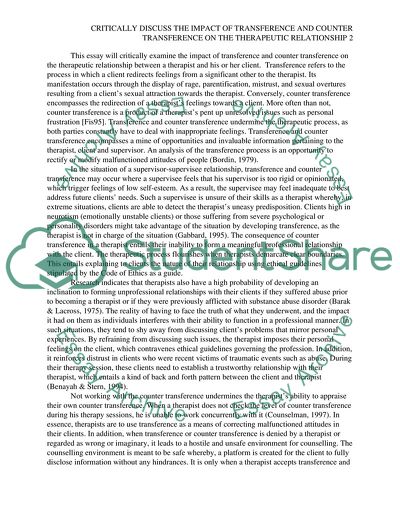Cite this document
(The Impact of Transference and Counter Transference on the Therapeutic Coursework Example | Topics and Well Written Essays - 2750 words, n.d.)
The Impact of Transference and Counter Transference on the Therapeutic Coursework Example | Topics and Well Written Essays - 2750 words. https://studentshare.org/psychology/1827327-critically-discuss-the-impact-of-transference-and-counter-transference-on-the-therapeutic-relationship
The Impact of Transference and Counter Transference on the Therapeutic Coursework Example | Topics and Well Written Essays - 2750 words. https://studentshare.org/psychology/1827327-critically-discuss-the-impact-of-transference-and-counter-transference-on-the-therapeutic-relationship
(The Impact of Transference and Counter Transference on the Therapeutic Coursework Example | Topics and Well Written Essays - 2750 Words)
The Impact of Transference and Counter Transference on the Therapeutic Coursework Example | Topics and Well Written Essays - 2750 Words. https://studentshare.org/psychology/1827327-critically-discuss-the-impact-of-transference-and-counter-transference-on-the-therapeutic-relationship.
The Impact of Transference and Counter Transference on the Therapeutic Coursework Example | Topics and Well Written Essays - 2750 Words. https://studentshare.org/psychology/1827327-critically-discuss-the-impact-of-transference-and-counter-transference-on-the-therapeutic-relationship.
“The Impact of Transference and Counter Transference on the Therapeutic Coursework Example | Topics and Well Written Essays - 2750 Words”. https://studentshare.org/psychology/1827327-critically-discuss-the-impact-of-transference-and-counter-transference-on-the-therapeutic-relationship.


